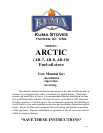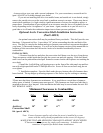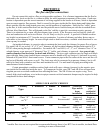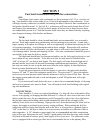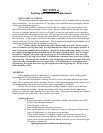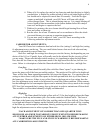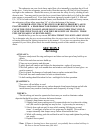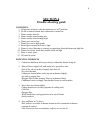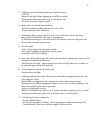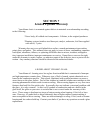
SECTION 3
Fuel tank installation and fuel line connections
OIL:
Your Kuma Arctic comes with a carburetor set for an average of a 2.35 cc. viscosity rat-
ing. You should be able to burn either #1 or #2 fuel with adjustments to the carburetor. A spe-
cial high viscosity carburetor is available for burning bio-diesel if desired. Due consideration to
fuel grades should be noted. #1 Fuel oil, K-1, or kerosene will burn much cleaner than #2 fuel
and requires less maintenance. #2 fuel or diesel grades of fuel are fine to burn, however there
are combustibles present in # 2 fuel that become solids when they are burned, thereby requiring
more frequent cleaning of the decoker and burner.
TANK:
The fuel tank should be clean (second-hand tanks not recommended), so a new tank is
advised. Steel tanks require more maintenance such as painting to prevent rust. A tank with a
larger capacity will require less fillings as well as an opportunity to obtain better pricing for fuel
oil in greater quantities. Avoid placing the tank in direct sunlight. Warm tanks will condense
moisture which will fall to the bottom of your tank where it will need to be drained to prevent
valve damage and/or freezing and stopping oil flow. Also, due consideration should be given to
accessibility to the tank for delivery trucks.
The ideal tank should have two bottom-end outlets: one for fuel supply to the stove, and
one to drain off any water and dirt. To be able to do this, the tank must be installed with a
“fall” of at least 1/4” per foot of tank length. The fuel supply will come from the high end of
the tank and the lower end will be used for draining condensation and impurities. If the tank
has only one outlet, be sure to tip the tank away from the outlet slightly, as described above.
Brick or cement foundation for the tank is advised.
To provide correct pressure of the fuel supply to your stove, the tank outlet should be
between 16” and 72” above the carburetor on the stove. Do not exceed 72” above the carbure-
tor as excessive head pressure could limit the carburetor’s ability to shut off fuel flow. Be sure
the support system under the tank is safe and adequate as a full 300 gallon tank will weigh
about 2000 lb.
If you must install a tank below the stove, or above the recommended height, a lift pump
and/or a level control valve must be fitted. You will need to check local building codes regard-
ing such installations.
CONNECTIONS:
There should be 2 valves on a typical installation: 1) a shut-off valve at the tank to allow
service to any piping, or changing the main filter and 2) a shut-off valve close to the stove to be
able to isolate the stove for any maintenance, and (if required by code) a fire valve right before
the fuel pipe enters the building which would automatically shut off the oil supply in the
unlikely event of the stove overheating. Piping to the stove from the tank may be either steel or
copper, but copper is preferred to prevent any rusting problems. When making the fuel line
connection with the copper line from the tank to the stove, it is best to have a gradual slope or
“fall” on the line (i.e. no dips or kinks) so as to prevent any air bubbles or collection of dirt or
other impurities. A 3/8” diameter copper supply line is recommended and either compression
type or flare type fitting may be used. Finally, a good quality filter that also traps water should
be placed at the tank to ensure a good, clean supply of oil to your stove. The carburetor on the
stove is equipped with a screen-type filter but it is not intended for use as the primary filter.
4



